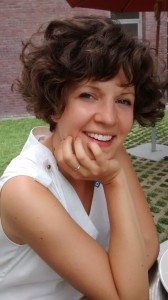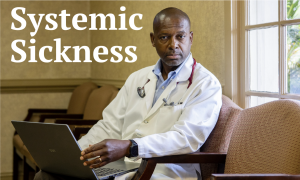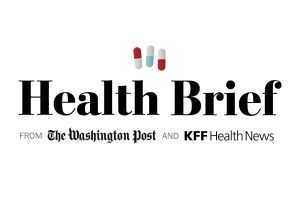Nurse Executives & Nail Salons
I’ve been eyeing my colleagues’ manicures lately – a wardrobe staple, now that I work in nursing administration. The higher the title, the fancier the nails, it seems. Gone are the days where my closely trimmed, bare nails matched my simple scrubs. Dry cleaned suits and pumps are job requirements, and tasteful manicures seem highly recommended. Recently, I’ve considered picking up the practice, keeping my hands in my lap with rookie shame. I learned early on in my nursing career that the intensive care unit was no place for manicured fingernails, but administration is a different story. The on-and-off of latex gloves, constant washing, and ever-present hand sanitizer that nixed my polish in a single shift aren’t as present as I walk the halls

 I’ve been eyeing my colleagues’ manicures lately – a wardrobe staple, now that I work in nursing administration. The higher the title, the fancier the nails, it seems. Gone are the days where my closely trimmed, bare nails matched my simple scrubs. Dry cleaned suits and pumps are job requirements, and tasteful manicures seem highly recommended. Recently, I’ve considered picking up the practice, keeping my hands in my lap with rookie shame.
I’ve been eyeing my colleagues’ manicures lately – a wardrobe staple, now that I work in nursing administration. The higher the title, the fancier the nails, it seems. Gone are the days where my closely trimmed, bare nails matched my simple scrubs. Dry cleaned suits and pumps are job requirements, and tasteful manicures seem highly recommended. Recently, I’ve considered picking up the practice, keeping my hands in my lap with rookie shame.
I learned early on in my nursing career that the intensive care unit was no place for manicured fingernails, but administration is a different story. The on-and-off of latex gloves, constant washing, and ever-present hand sanitizer that nixed my polish in a single shift aren’t as present as I walk the halls in my supervisory role. In a week, I might don a single pair of gloves, and although I can’t kick the compulsive habit of frequent hand washing, my work is heavy in polish-preserving tasks like e-mailing and making phone calls.
But after this weekend’s New York Times report on the dangers that NYC manicurists face, I wonder if nurses – bedside and executive alike – shouldn’t take a definitive stand against the practice altogether.
From a patient safety perspective, nail polish and artificial nail use in nurses should be a never-event. Studies dating from the ‘80s clearly link bacteria colonization to nurses’ artificial nails, and the CDC forbids them in their hand hygiene guidelines. To say that no nurse gets a manicure would be a boldface lie, but the practice isn’t looked at favorably at the bedside – why shouldn’t this be the same for the boardroom?
Coupled with the risks to patients, the shocking data from NY, and the lighting-speed movement from New York State Governor Andrew Cuomo, nurse executive support, or at very least, statement, seems a natural step to take. Exposing the health risks of salon workers, while beneficial, simply reminds us of a deeper problem – the exclusion of undocumented immigrants from the benefits of the Affordable Care Act. Our implicit support of this industry, and current federal policy that excludes undocumented immigrants from health care access, seems shamefully untrue to the Lillian Walds of our profession.
Although Cuomo is touting immunity from an immigration standpoint, his group will canvass all nail salons, which, according to the Times’ report, were chock full of undocumented citizens. With linkage to cancer, prenatal problems and devastating lung disorders, more than workplace reform is needed, and as a nurse leader, I have trouble sporting ten-digit support of an industry that allows such rampant abuse and government policy that furthers such exclusion.
Access to health insurance for undocumented immigrants isn’t provided through the provisions of the Affordable Care Act. While some states are working to fill this gap, New York included, many holes remain. According to a report put out by the Hastings Center this April, approximately 20,000 of NYC’s undocumented immigrants will be left with no coverage at all – a generous assessment, seeing that they’ve counted 500,000 in total, estimate that many were not counted, and even more are unlikely to follow the routes to coverage that the report outlines.
While I can’t attest to the technical risks of nail salons or the problems of regulation that these articles convey, I can speak to my experience caring for patients with some of the diagnoses mentioned. Sarcoidosis, a lung disorder that one of the Times’ sources has at the age of only 52, is characterized by permanent lung damage in 20-30{c754d8f4a6af077a182a96e5a5e47e38ce50ff83c235579d09299c097124e52d} of its victims. I’ve cared for many patients in the ICU with this condition; they are some of the hardest to provide sufficient oxygen to, and many with preventative care die on ventilator support while waiting for a lung transplant.
Other workers presented with cancer and gynecological problems. The American Cancer Society estimates that cancer treatment costs total almost $89 billion dollars, half of which are spent on outpatient care. Without insurance, this amount is absorbed by the public health care system, and without access to preventative health care, these conditions, which are largely treatable in insured populations, aren’t typically detected until advanced stages of disease.
Beyond the cost is the disparaging reality of life without the ability to safely seek out care – or preventative counseling – for workplace illness. While I enjoy the practical and emotional benefits of short and long-term disability insurance, worker’s compensation security and a full barrage of health benefits, these, and many undocumented workers, live in fear of even inquiring about them. Many daily risk their lives, jobs and places in the world, with little hope of resolution or support.
While exposing unsafe work environments is a benefit to all, I wonder how these workers feel with the spotlight on them. Increased scrutiny brings increased risk, and without safe, accessible places to go for care, what New York means for good may exacerbate harm. Often, our system doesn’t holistically help those that fall within its shadows – historically, the shadows are where nurse activists pick up the pieces, enter, and heal.
I don’t know about you, but this news on nail salon safety might be a perfect opportunity for nurse executives to mirror our professional ancestors by standing together as activists against a national policy that excludes an entire people group from care. Until my government starts providing a solution to the undocumented immigrant gap, or I become part of one, my nails will stay proudly unadorned.
Amanda Anderson is editor of HealthCetera, works in nursing administration for Mount Sinai, has a graduate internship at the American Journal of Nursing for a dual master’s at Hunter & Baruch College, and runs the Nurse E-Writing Center at Hunter-Bellevue School of Nursing. You can follow Amanda on Twitter @12hourRN and on her personal site thisnursewonders.com.
SOURCE: Disruptive Women in Health Care – Read entire story here.








